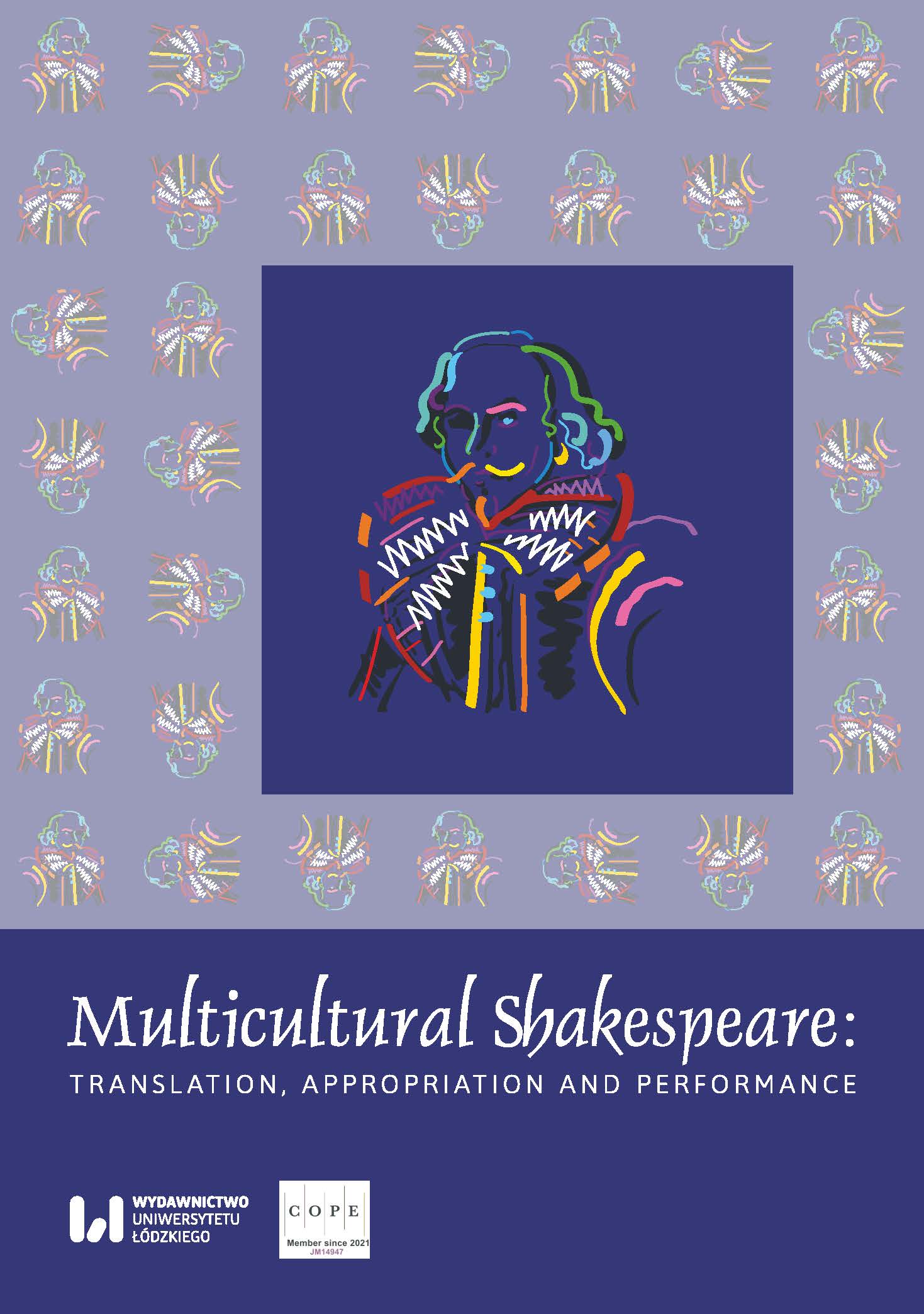“This is one Lucianus, nephew to the king!:” Political Dynamics of Four Hungarian Translations of "Hamlet"
DOI:
https://doi.org/10.18778/2083-8530.28.13Keywords:
translation, Hamlet, Shakespeare, politics, Hungary, Ferenc Kazinczy, János Arany, István Eörsi, Ádám NádasdyAbstract
In this paper I endeavour to retell a partial history of the Hungarian translation of Hamlet’s commentary: “This is one Lucianus, nephew to the King!” (3:2:239) on the “Murder of Gonzago,” aiming to elucidate the intricate interplay between translation, cultural discourse, and socio-political dynamics. Hamlet’s commentary, seemingly straightforward yet laden with complexity, poses implications capable of reshaping the trajectory and purpose of his theatrical experiment, crafted to probe and establish Claudius’ guilt. The partial history of translations encompasses the epochs of Ferenc Kazinczy (18th century) and János Arany (19th century) up to the modern renderings of István Eörsi and Ádám Nádasdy (20th-21st centuries). Within this framework, I claim that exploring these translations of Hamlet’s commentary offers a gauge of Hamlet’s position in Hungarian cultural discourse. The evolving connotations of words, reflective of linguistic shifts, imbue layered meanings not only onto the statement itself but also onto the theatrical experiment it encapsulates. This exploration of translation, interpretation, and linguistic evolution sheds light on Shakespeare’s and Hamlet’s socio-cultural-political role in Hungary, as translations serve not merely as transparent channels of meaning but also as reflections on the political and cultural commitments of translators and their audiences.
Downloads
References
Almási, Zsolt. “Nádasdy, Ádám.” The Palgrave Encyclopedia of Global Shakespeare. Springer International Publishing, 2021. 1-2. https://doi.org/10.1007/978-3-319-99378-2_97-1
Google Scholar
DOI: https://doi.org/10.1007/978-3-319-99378-2_97-1
Balogh, Géza. “Hamlet, Magyar Királyfi.” Criticai Lapok 9.7-8 (2000): 2-6.
Google Scholar
Bernáth, András. “Látszat, valóság és a természetfeletti: élet és halál kérdései a Hamletben és a Macbethben’.” Élet és halál Shakespeare életművében. Eds. Zsolt Almási et al., Reciti, 2017. 217-239.
Google Scholar
Calderwood, James L. To Be and Not to Be. Negation and Metadrama in Hamlet. Columbia University Press, 1983.
Google Scholar
DOI: https://doi.org/10.7312/cald94400
Cieger, András. “Arany János Hamletjének egy lehetséges politikatörténeti kontextusa.” „Eszedbe jussak”: Tanulmányok Arany János Hamlet-fordításáról, Ed. Júlia Parais, Reciti, 2015. 89-140.
Google Scholar
Czuczor, Gergely, and János Fogarasi. A Magyar Nyelv Szótára (A Dictionary of the Hungarian Language). Magyar Tudományos Akadémia, 1862. http://mek.oszk.hu/05800/05887/pdf/1kotet_1.pdf Accessed 20 February 2024
Google Scholar
Dávidházi, Péter. “Teve, Menyét, Cethal: Ellenállásunk (Felhő) Próbái Shakespeare-től Aranyig.” Per Passivam Resistentiam: Változatok a Hatalom És Írás Témájára, Augmentum Kiadó, 1998. 65-81.
Google Scholar
Deutermann, Allison K. ‘“Caviare to the General?:’ Taste, Hearing, and Genre in Hamlet.” Shakespeare Quarterly 62.2 (2011): 230-255. https://doi.org/10.1353/shq.2011.0019
Google Scholar
DOI: https://doi.org/10.1353/shq.2011.0019
Eörsi, István. “Shakespeare-Fordításaim Elé.” Hamlet: Dán Királyfi Tragédiája, Cserépfalvi Kiadó, 1993.
Google Scholar
Fazekas, Sándor. “Az ezerarcú hős: Kazinczy Ferenc Hamlet-fordításáról.” Bárka online 2018.5 (2018). http://www.barkaonline.hu/esszek-tanulmanyok/6468-kazinczy-ferenc-hamlet-forditasarol#_ftnref6 Accessed 20 February 2024.
Google Scholar
Gaukroger, Stephen. Francis Bacon and the Transformation of Early-Modern Philosophy. Cambridge University Press, 2001.
Google Scholar
DOI: https://doi.org/10.1017/CBO9780511612688
Gottschalk, Paul. “Hamlet and the Scanning of Revenge.” Shakespeare Quarterly 24.2 (Apr. 1973): 155-170. https://doi.org/10.2307/2868854
Google Scholar
DOI: https://doi.org/10.2307/2868854
Kazinczy, Ferenc. Kül-Földi Jásztó-Színje. Első Kötet. Hamlet. Ellinger János, 1790. http://deba.unideb.hu/deba/kazinczy_muvei/text.php?id=kazinczy_ford_4_k Accessed 20 February 2024
Google Scholar
Kemp, Lysander. “Understanding ‘Hamlet’.” College English 13.1 (Oct. 1951): 9. https://doi.org/10.2307/372355 Accessed 20 February 2024
Google Scholar
DOI: https://doi.org/10.2307/372355
Keresztury, Dezső. “Csak hangköre más”: Arany János. Szépirodalmi Kiadó, 1987.
Google Scholar
Minier, Márta. “The Rhetoric of Mastery and Discipleship in the Hungarian Canon of Hamlet Translations.” Hamlet Translations: Prisms of Cultural Encounters across the Globe. Eds. Márta Minier and Lily Kahn, Legenda, 2021.
Google Scholar
Nádasdy, Ádám. A Csökkenő Költőiség: Tanulmányok, Beszélgetések Shakespeare És Dante Fordításáról. Magvető, 2021.
Google Scholar
Reuss, Gabriella. Shakespeare Londonban És Pest-Budán: Színházi Előadások Emlékezete. L’Harmattan, 2017.
Google Scholar
Rossi, Paolo. “Bacon’s Idea of Science.” The Cambridge Companion to Bacon. Ed. Markku Peltonen, Cambridge University Press, 1996. 25-46.
Google Scholar
DOI: https://doi.org/10.1017/CCOL052143498X.002
Sargent, Rose-Mary. “Bacon as an Advocate for Cooperative Scientific Research.” The Cambridge Companion to Bacon. Ed. Markku Peltonen, Cambridge University Press, 1996. 146-171.
Google Scholar
DOI: https://doi.org/10.1017/CCOL052143498X.007
Schandl, Veronika. Socialist Shakespeare Productions in Kádár-Regime Hungary: Shakespeare behind the Iron Curtain. Edwin Mellen Press, 2008.
Google Scholar
Schneiderman, Stuart. “The Saying of Hamlet.” SubStance 3.8 (1973): 77. https://doi.org/10.2307/3684281
Google Scholar
DOI: https://doi.org/10.2307/3684281
Shakespeare, William. Hamlet. Edited by Harold Jenkins, Methuen, 1982.
Google Scholar
Shakespeare, William. Hamlet, Dán Királyfi. Translated by János Arany, vol. 7, Akadémiai Kiadó, 1961, http://digiphil.hu/o:ajom7-hamlet.tei.1 Accessed 20 February 2024.
Google Scholar
Shakespeare, William. Hamlet Dán Királyfi Tragédiája. Transl. István Eörsi, Cserépfalvi Kiadó, 1993.
Google Scholar
Shakespeare, William. Hamlet, Prinz von Dännemark: Ein Trauerspiel in 6 Aufzügen. Zum Behuf des Hamburgischen Theaters. Transl Friedrich Ludwig Schröder, Herold, 1777, https://digi.ub.uni-heidelberg.de/diglit/shakespeare1777/0084 Accessed 20 February 2024.
Google Scholar
Shakespeare, William. Shakespeare Három Dráma: Hamlet, Szentivánéji Álom, Lear Király. Transl. Ádám Nádasdy, Magvető, 2012.
Google Scholar
Sirató, Ildikó. ‘“Hamlet Él!:’ Az Első Magyar Shakespeare-Fordítások (Magyarítások) Dramaturgiájáról.” Élet És Halál Shakespeare Életművében, Eds. Zsolt Almási et al., Reciti, 2017. 189-202.
Google Scholar
Downloads
Published
How to Cite
Issue
Section
License

This work is licensed under a Creative Commons Attribution-NonCommercial-NoDerivatives 4.0 International License.












